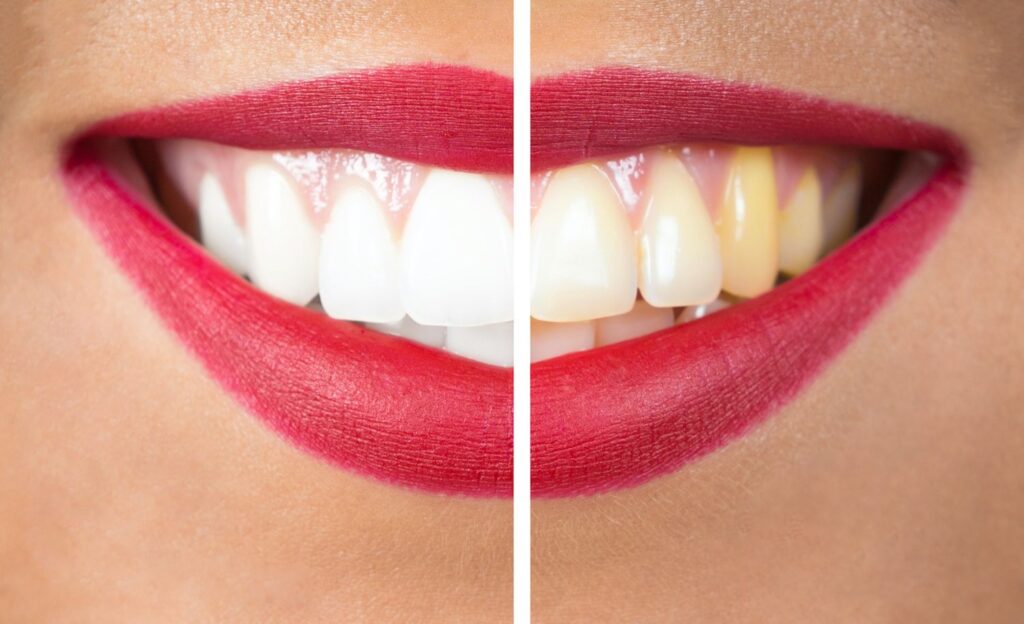Many people strive to maintain a pearly white color in their smiles. But over time, your teeth can change their appearance and become discolored in many ways. If you form stains on your teeth, you can feel a blow to your self-esteem that can shake your overall confidence.
Your dentist can offer teeth-whitening solutions that can brighten your smile. But you can preserve your naturally white smile if you know more about the ways stains can affect your teeth. Read on to find four types of discoloration that may develop on your teeth and what they mean for your dental health.

Dark Tooth Stains
You can form dark stains on your teeth from consuming certain foods and beverages. Many dark-colored food items get their color from substances that can transfer to your teeth while you eat or drink. These substances can absorb into your tooth enamel where a toothbrush cannot get rid of them, leaving you with these stains.
You can limit these items, like red wine, coffee, and black tea, in your diet. Sipping through a straw or diluting a beverage can reduce your chances of forming these stains. But these efforts will not get rid of the likelihood entirely. So pay attention to how your diet affects your tooth color.
Sometimes, dark stains can develop as a symptom of tooth decay. Visit your dentist regularly to ensure you can treat cavities promptly and restore your smile.
Yellow Tooth Color
Your teeth might develop a yellow hue due to staining agents as well. Not only could the foods you consume contribute to this dental discoloration, but smoking tobacco and certain medicines can make your teeth turn yellow as well.
Teeth might also start to appear yellow due to worn enamel. Aging and other dental deterioration will mean that this outer layer of the teeth will begin to weaken and thin, exposing the underlying dentin layer, which will look yellow.
Your enamel will not regenerate on its own. But you can discuss treatments to replace lost enamel and restore the aesthetic and structure of your smile with your dentist.
Dullness in the Tooth
If your bright white teeth become greyish or dull in color, this can sometimes occur due to consuming staining agents. But this might also be a symptom of nonvital tooth pulp or what is commonly known as a dead tooth.
This happens when impact trauma or other dental damage hurts the blood vessels within the pulp of the tooth so that it can no longer receive adequate blood flow. A dead tooth is not necessarily a dental emergency. But if you notice pain, it might be infected, and you should call a dentist right away.
White Spots on the Tooth
White spots on the surface of your teeth can develop for a number of reasons. In many cases, they point to weak areas of the enamel where the mineral components have deteriorated.
If you do not consume enough calcium or your enamel suffers erosion, then you can experience this demineralization in your teeth. Talk to your dentist about ways to add strength to your teeth or cover stubborn stains.
